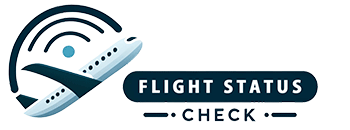In today’s fast-paced world, the ability to track live aircraft has become an invaluable tool for aviation enthusiasts, travellers, and even those with a passing interest in the skies above. With advanced technology and a wealth of information at our fingertips, it’s easier than ever to keep tabs on the movements of commercial airliners, private planes, and everything in between. In this article, we’ll explore the fascinating world of live aircraft tracking, delving into the history, mechanics, and practical applications of this innovative technology.
To understand the concept of live aircraft tracking, it’s essential to grasp the underlying technology that makes it all possible. At the core of this system is a network of ground stations and satellites that work in concert to monitor and relay the positions of aircraft in real-time. These stations communicate with the transponders onboard each aircraft, capturing crucial data such as location, altitude, speed, and flight direction. This information is then transmitted to a central database, where it’s processed and made available to the public through various online platforms and mobile apps.
The origins of live aircraft tracking can be traced back to the early days of aviation, when radio communication and radar technology were first being developed. Initially, these systems were primarily used for military and air traffic control purposes, allowing ground personnel to monitor the movements of aircraft within their jurisdiction. As technology advanced, these capabilities were expanded to include civilian use, paving the way for the modern live aircraft tracking systems we know today.
One of the most widely used platforms for live aircraft tracking is Flightradar24, a Swedish-based company that offers real-time flight tracking services to millions of users around the world. Through their website and mobile app, aviation enthusiasts can track flights, explore historical flight data, and even view 3D representations of aircraft as they soar through the skies. With a vast network of ground stations and satellites, Flightradar24 provides an incredibly detailed and accurate picture of air traffic worldwide, making it an indispensable tool for anyone with an interest in aviation.
In addition to serving as a source of entertainment and curiosity for aviation enthusiasts, live aircraft tracking has proven to be an invaluable resource for travellers and aviation professionals alike. By using these systems, passengers can monitor the status of their flights in real-time, keeping them informed of any delays, diversions, or other unexpected developments. This level of transparency and convenience has revolutionised the way we approach air travel, empowering passengers with the knowledge and control they need to navigate the skies with confidence.
For aviation professionals, live aircraft tracking offers a wealth of benefits when it comes to safety, efficiency, and operational planning. Air traffic controllers can use these systems to monitor the positions of aircraft under their jurisdiction, enabling them to maintain safe spacing and provide timely guidance to pilots. Airlines and aircraft operators also utilise live tracking data to optimise route planning, monitor fuel consumption, and improve overall fleet management. By leveraging these insights, they can streamline operations, reduce costs, and enhance the overall passenger experience.
Beyond its practical applications, live aircraft tracking has also become a popular tool for flight enthusiasts and armchair aviators. Through platforms like Flightradar24 and others, individuals can explore the skies in real-time, tracking the movements of everything from commercial airliners to military jets and private planes. Users can access a wealth of information about each flight, including details about the aircraft, its origin and destination, and even the weather conditions at various altitudes. This level of insight offers a new perspective on the world of aviation, allowing people to connect with the skies in ways they never could before.
In recent years, live aircraft tracking has become even more accessible with the advent of mobile technology. With the rise of smartphones and tablets, users can now access real-time flight information from virtually anywhere, giving them the ability to stay connected to the skies no matter where they are. This level of connectivity has further fuelled the fascination with live aircraft tracking, opening up new opportunities for education, entertainment, and community engagement within the aviation world.
Looking ahead, the future of live aircraft tracking promises even more exciting developments and innovations. With advances in satellite technology, artificial intelligence, and data analytics, we can expect to see even more detailed and comprehensive tracking capabilities in the years to come. This could include enhanced 3D visualisations, predictive analytics, and even more sophisticated tools for monitoring and managing air traffic on a global scale. As these technologies continue to evolve, the possibilities for live aircraft tracking are truly limitless, and the impact on aviation and society as a whole is sure to be profound.
In conclusion, the world of live aircraft tracking is a captivating and dynamic realm that offers a wealth of opportunities for exploration and discovery. From its humble origins to its present-day prominence, this technology has transformed the way we interact with the skies, providing us with unprecedented insights and capabilities. Whether you’re a seasoned aviation enthusiast, a curious traveller, or simply someone with a passing interest in the world above, live aircraft tracking has something to offer for everyone. With its potential for innovation and expansion, it’s clear that live aircraft tracking will continue to shape the future of aviation, making the skies more accessible and engaging than ever before.

Leave a Reply